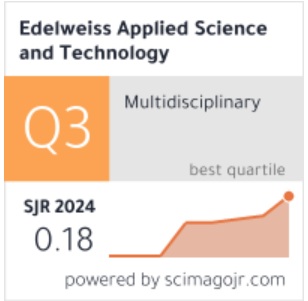All research articles submitted and accepted in 2025 will be eligible for a 100% waiver of APC if either the corresponding author or a co-author is recognized among the top 2% of most-cited scientists worldwide, according to the most recent Stanford/Elsevier citation database or a similarly recognized index.
Plagiarism Policy
At Edelweiss Applied Science and Technology (EAST), we maintain a zero-tolerance policy towards plagiarism. Upholding academic integrity is foundational to our mission of promoting original, high-quality scientific research. All submitted manuscripts undergo a rigorous similarity check using iThenticate (Turnitin) software.
Screening Process
- All articles are scanned through iThenticate to detect text similarity and potential plagiarism.
- A Turnitin similarity report will be shared with authors alongside the peer review reports.
Author Responsibility
Authors are strongly advised to conduct plagiarism checks prior to submission to avoid rejection or ethical concerns. Proper attribution through accurate citation and quotation is essential when referencing or paraphrasing other scholars’ work.
If plagiarism is identified at any stage, the article will be immediately rejected and will not be considered for resubmission. In case of published work found to be plagiarized post-publication, EAST reserves the right to retract the article and inform the relevant stakeholders or institutions.
Reporting Copyright Infringement
If you believe your work has been plagiarized in any EAST publication, please notify us with verifiable evidence. We are committed to taking prompt corrective actions to resolve such issues. For plagiarism-related queries or complaints, contact us directly.
Editorial Actions Based on Similarity Index
|
Similarity Index |
Editorial Decision |
|
Above 30% |
Rejected without resubmission. Indicates excessive borrowing, poor citation, or inadequate paraphrasing. |
|
19–30% |
Sent back for revision. Authors must improve paraphrasing and citation clarity. |
|
Below 19% |
Potentially acceptable. Minor citation improvements may be requested. |
For submissions in the 19–30% range and below 19%, authors are required to:
- Review and improve all paraphrased sections.
- Ensure that citations are complete and accurate.
- Resubmit the article along with a revised Turnitin report demonstrating a similarity index below 19%.






